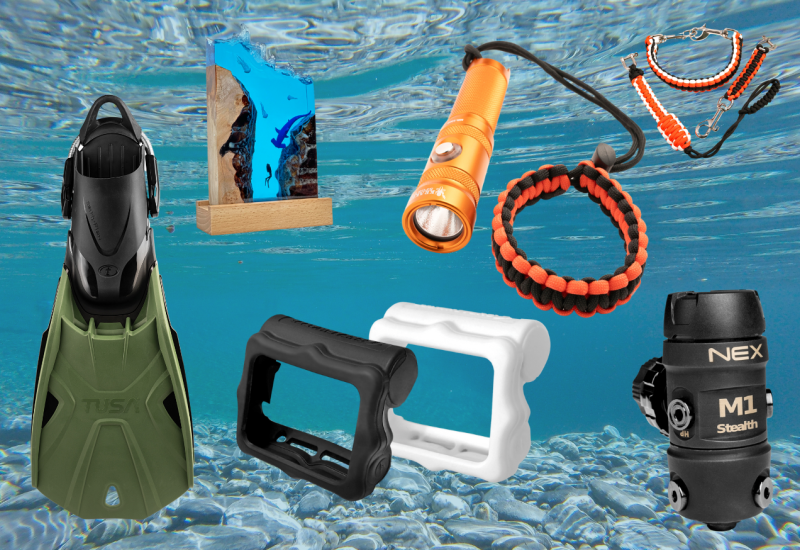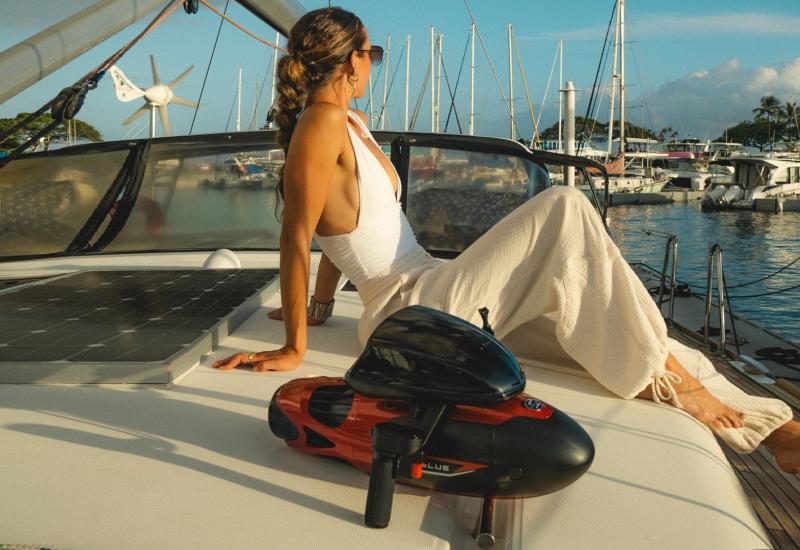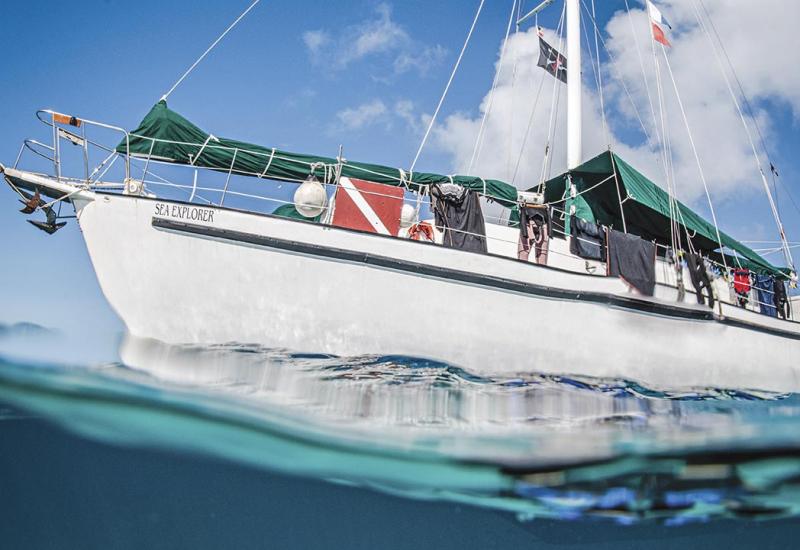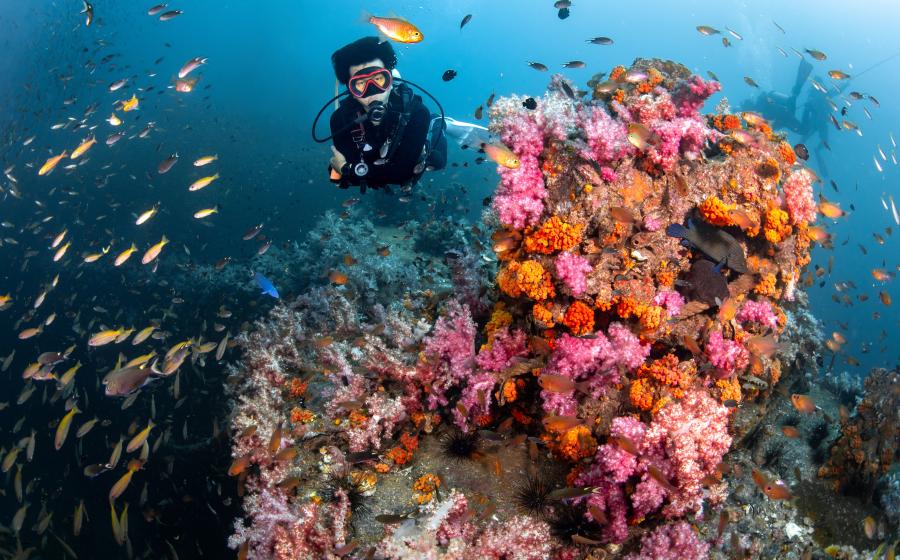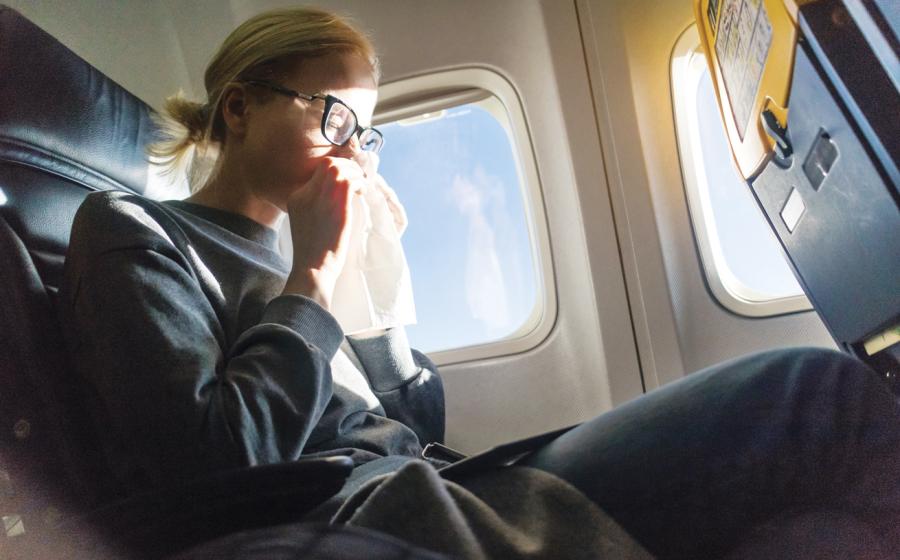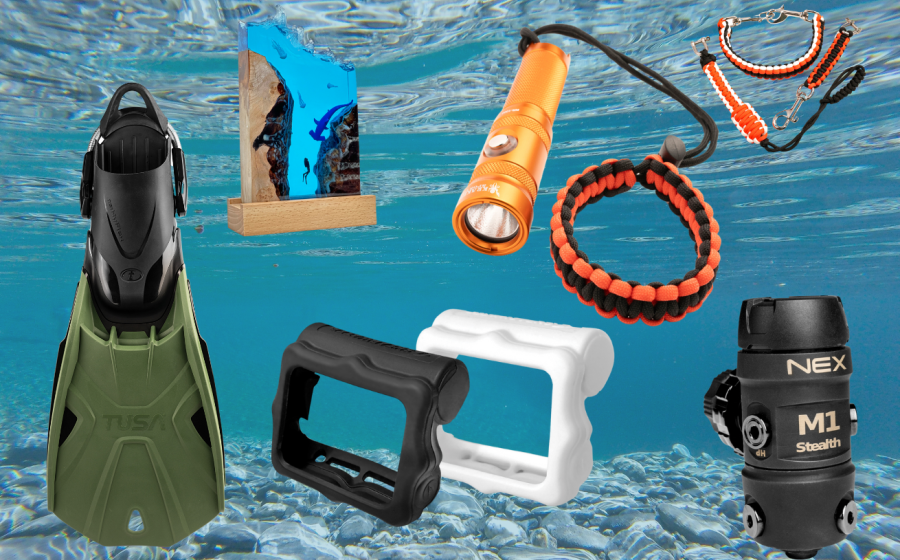Best Surface Signalling Devices
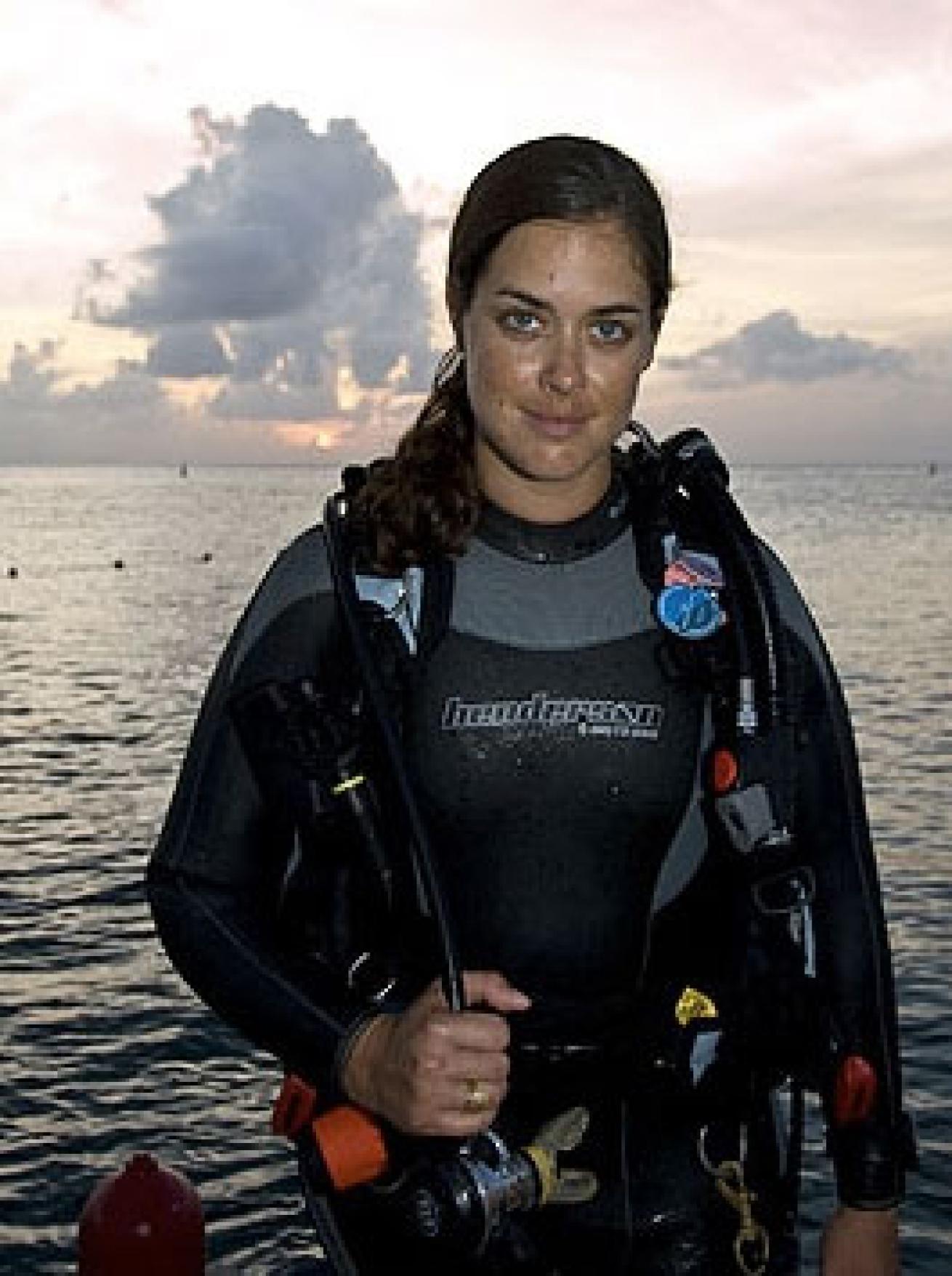
Getting back to the boat or shore is usually routine. But what if you get separated from the boat or your buddy? Are you equipped with the gear you need to make yourself visible?
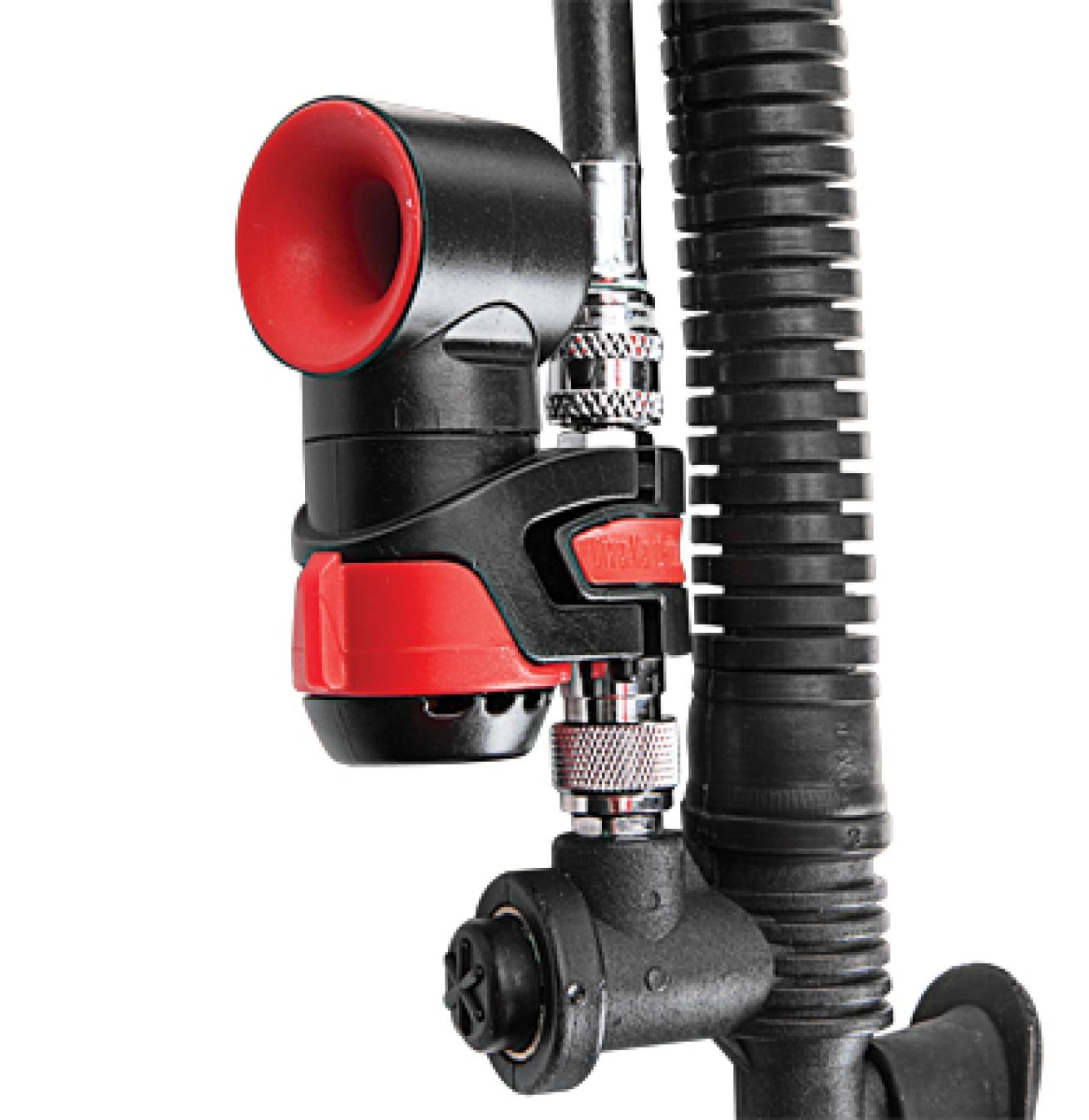
The Dive Alert Plus delivers a loud audible signal both on the surface and under water. It's the original integrated inflator air horn. The company claims that it can be heard up to a mile away, and testers have proved them right. The quality of sound is similar to the high pitch of a smoke detector alarm but 100 times louder. Measuring less than three inches square the super-compact Dive Alert Plus ties into your BC's low-pressure hose via quick-connect fittings. It will quickly get a dive boat's attention on the surface, or your dive buddy's attention at depth with just a push of the button. divealert.com
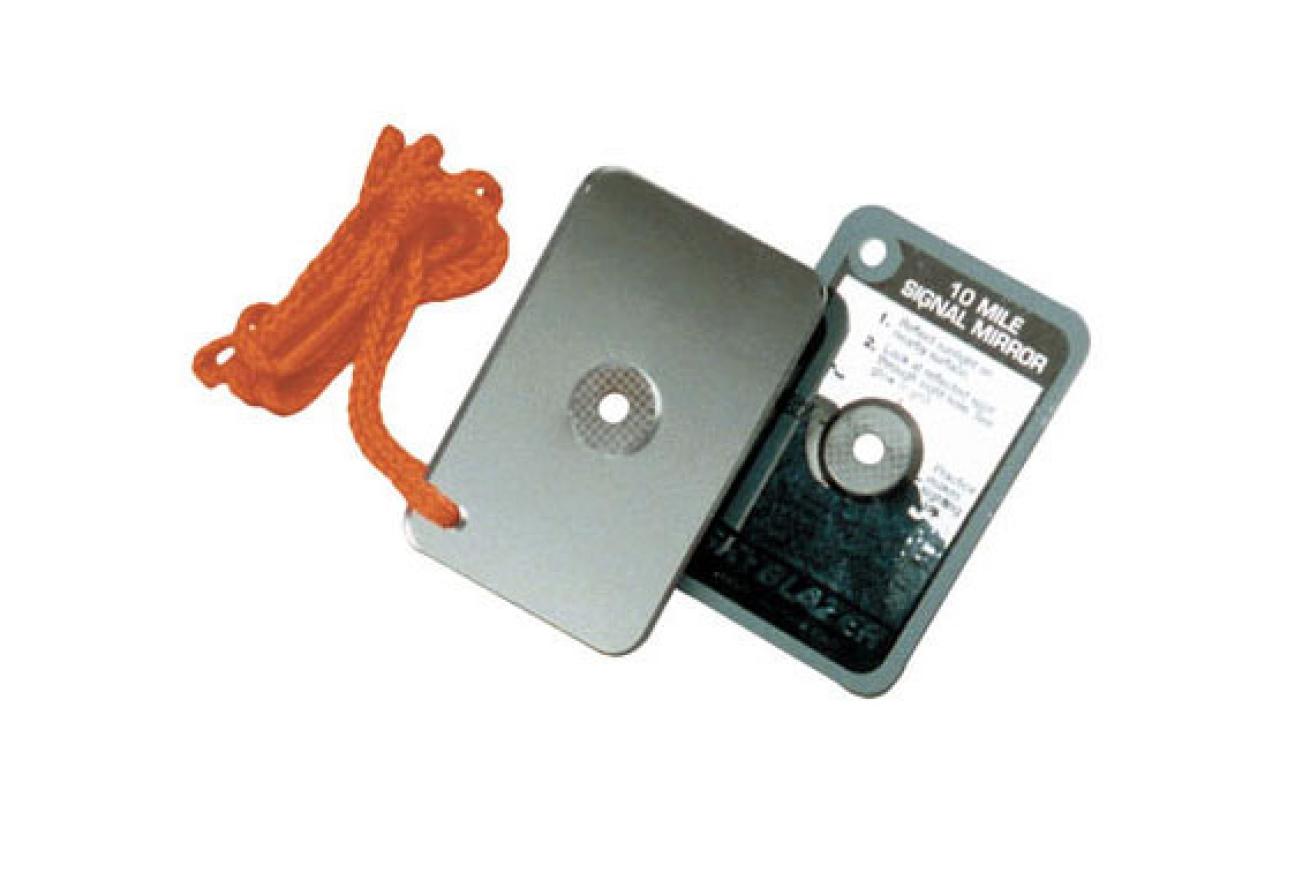
One of the most overlooked and highly successful types of surface signal is a mirror. They're light, compact and don't need batteries. Manufactured from nonbreakable plastic, this mirror's "signal" can be seen up to 10 miles away. Sighting target in center of mirror. innovativescuba.com
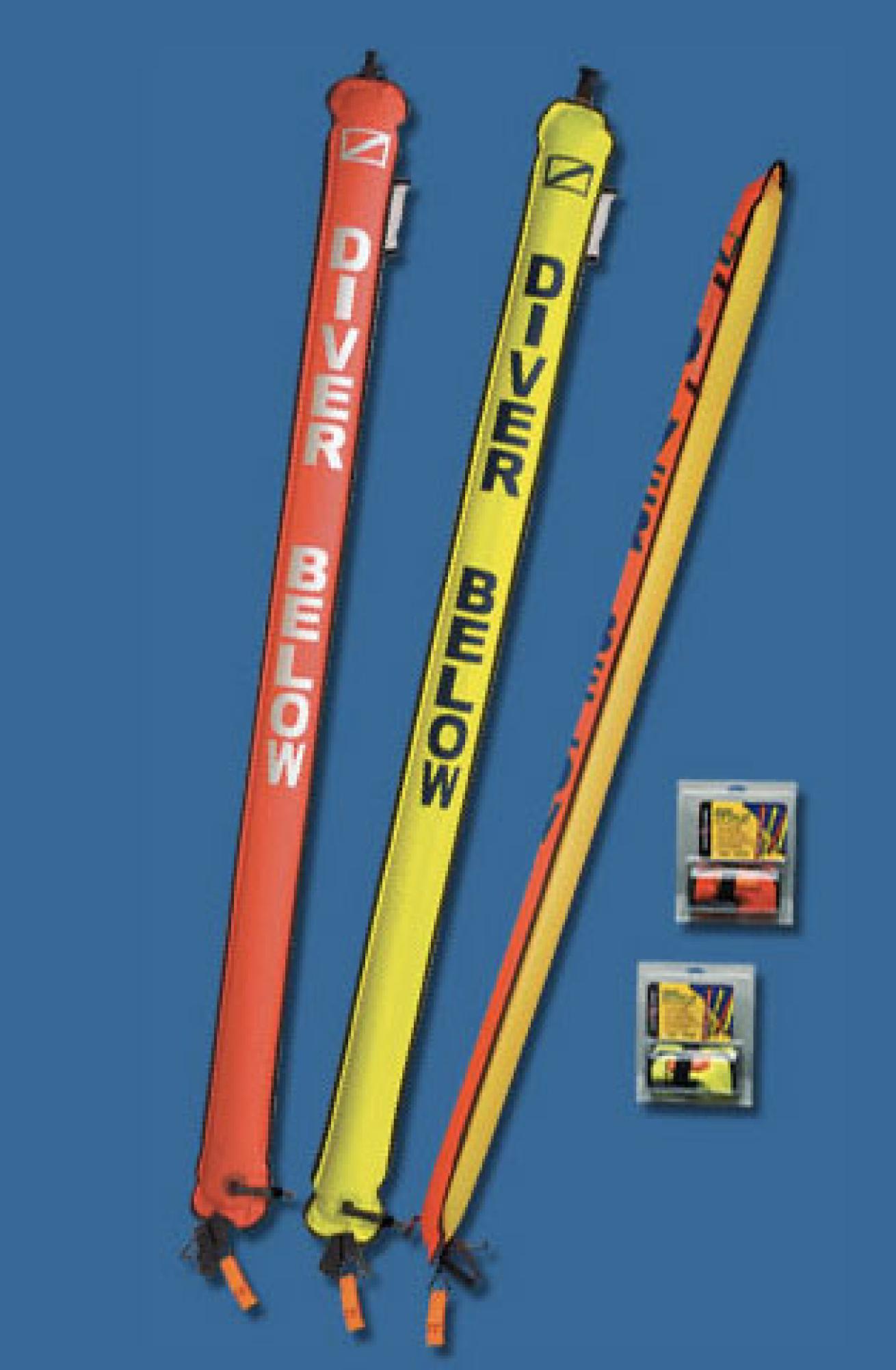
These high visibility 72-inch Cordura tubes come with "screw down" oral inflator, a safety whistle and vinyl light stick holder. Available in orange, yellow and two-color orange/yellow. innovativescuba.com
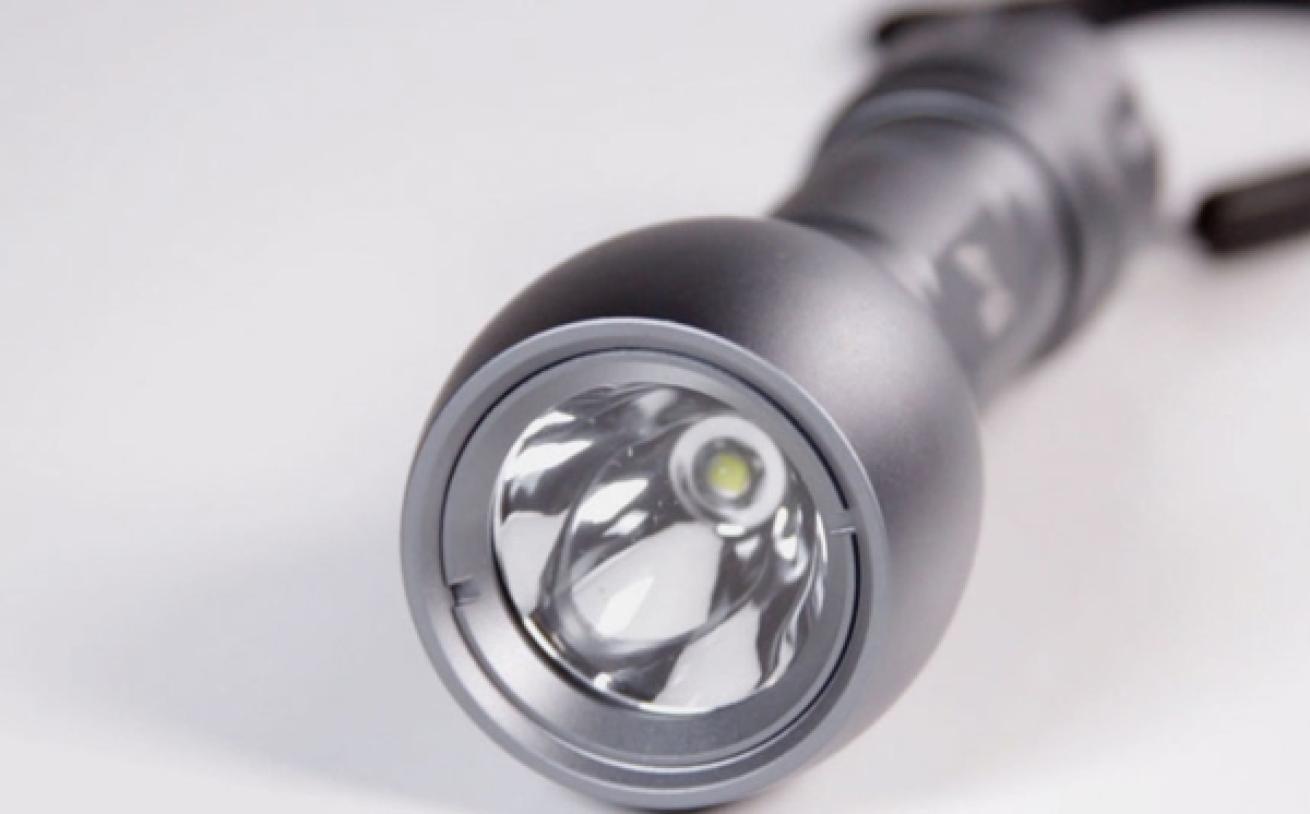
If you want a small light to carry on your dives (it measures 5 1/2 inches in length), but would like it to be bright enough to be seen on the surface if you get separated from your buddy or boat, consider this little torch. The T-120 Mini torch may be small in size, but it delivers quite a punch when it comes to illumination. To activate the T-120, simply twist the end cap and 750 lumens of white-hot light burst from the 10-watt LED bulb. The torch is powered by a custom-made lithium ion battery that delivers about 70 minutes of burn time between charges. istsports.com
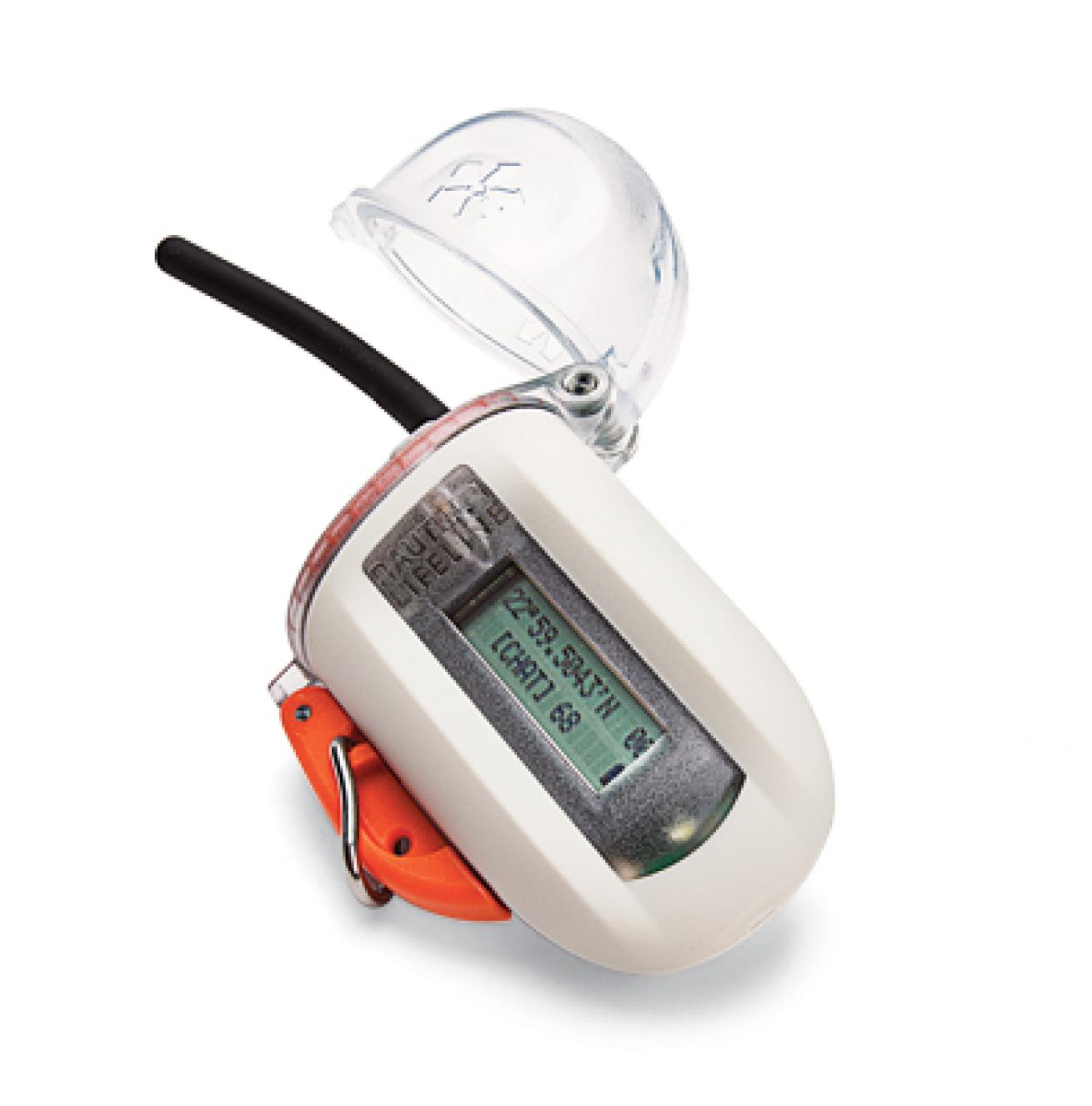
Surface-signaling devices are considered a must-have safety item for many divers, and the Nautilus Lifeline takes that concept to a new, ingenious level. A combination GPS receiver and VHF marine radio, it gives divers the ability to speak with boats up to eight miles away. Plus, the system will broadcast GPS coordinates of the diver's location to nearby vessels. A tough polycarbonate housing is rated to 425 feet and easily attaches to a BC's D-ring. Battery life is 24 hours in emergency mode and, even better, there's also a strobe. nautiluslifeline.com
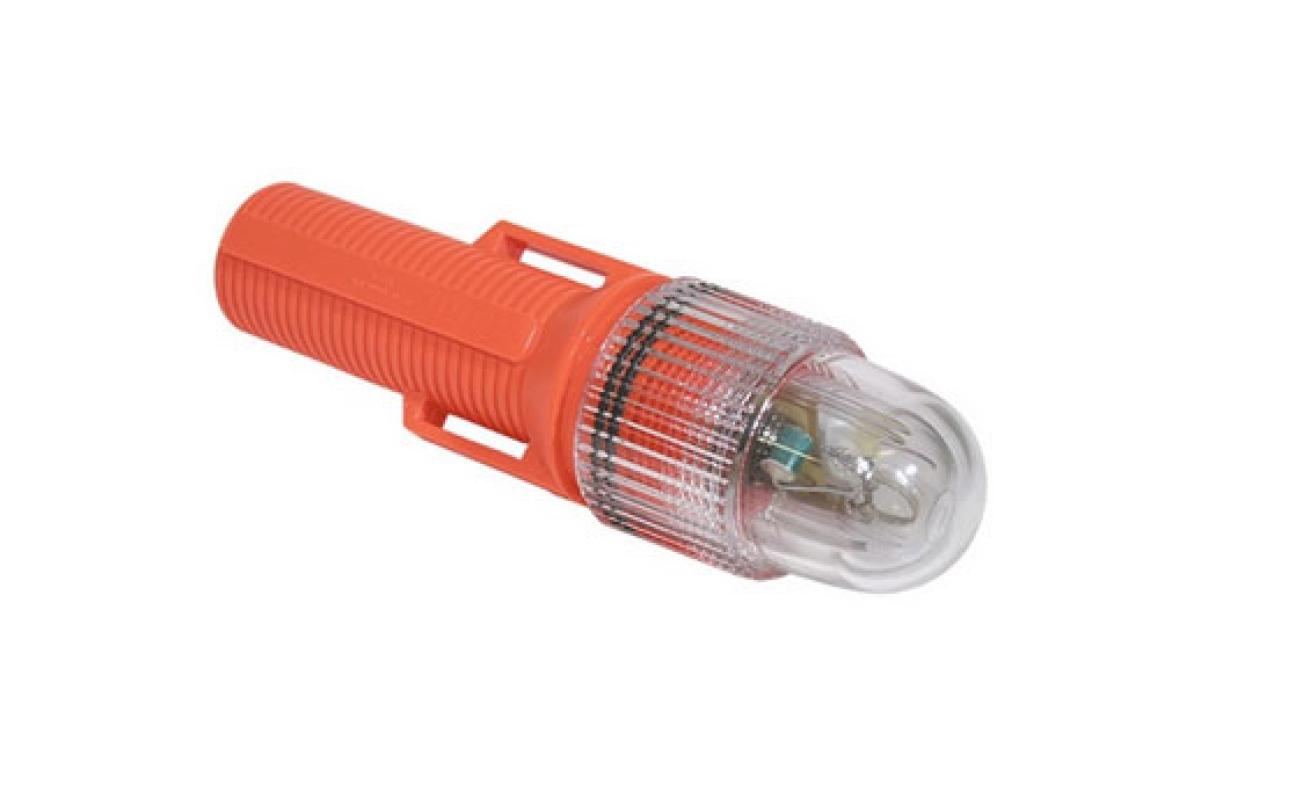
If your day dive turns into a night drift, the Xenon Strobe might get you found before dayllight. This strobe has nearly twice the burn time and is 30 percent brighter than a lot of other strobes. This double O-ring sealed unit will run 30+ hours on 2 C-cell alkaline batteries and can be seen for miles at night. It can also be used as an underwater beacon (it has a 500-foot (150 meters) depth rating). The strobe is made from durable ABS and Lexan for long life and corrosion-free use. The strobe comes equipped with a velcro strap. tek-tite.com
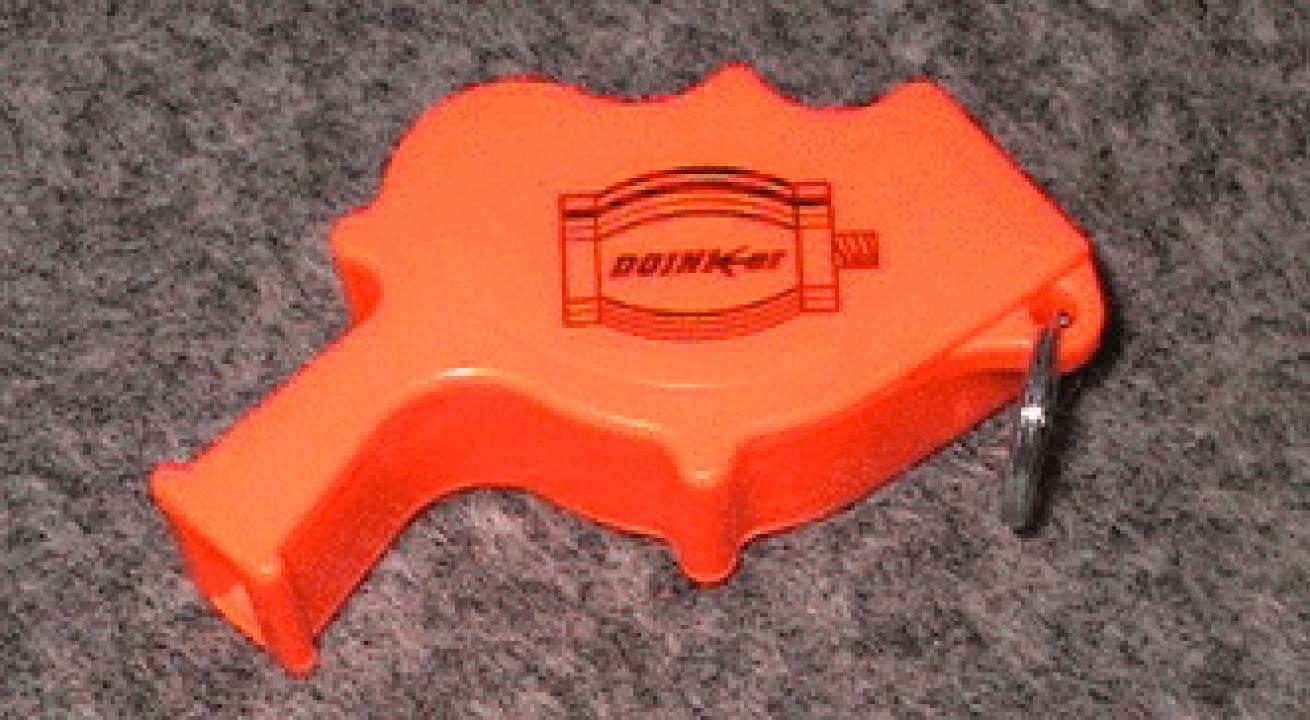
It's small, bright orange or yellow, and gets your point across with an ear-splitting trill. The Storm whistle is small enough to be tucked into a BC pocket and loud enough to be heard over a half-mile over water. wind-storm-whistles.com
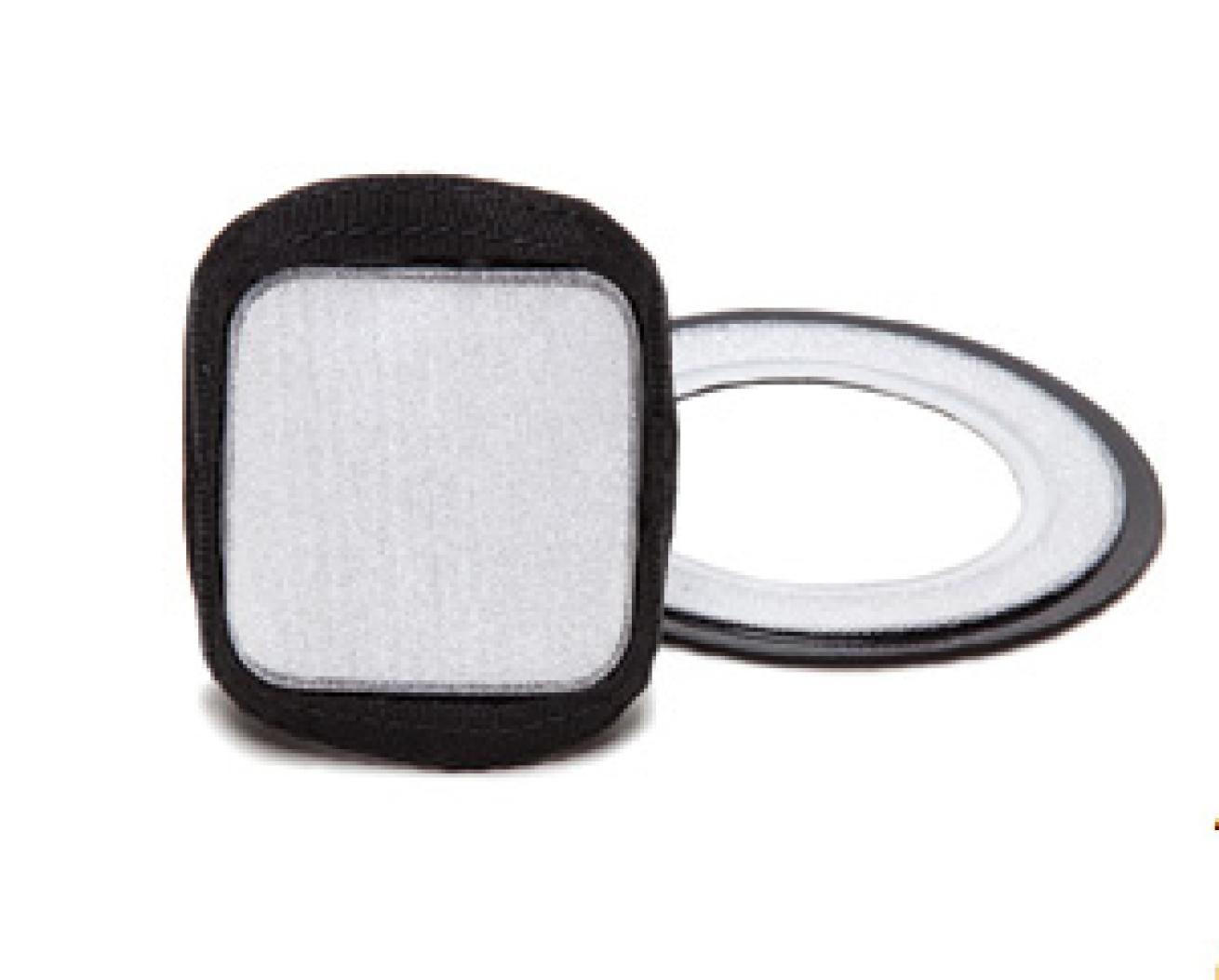
One of the easiest ways to add a little "Here I am!‚" to your rig is with this Reflective Kit for your BC. A reflective ring fits underneath the shoulder exhaust valve, and the patch fits just above the inflator-hose hold-down strap. So equipped, you increase your visibility day or night. aqualung.com
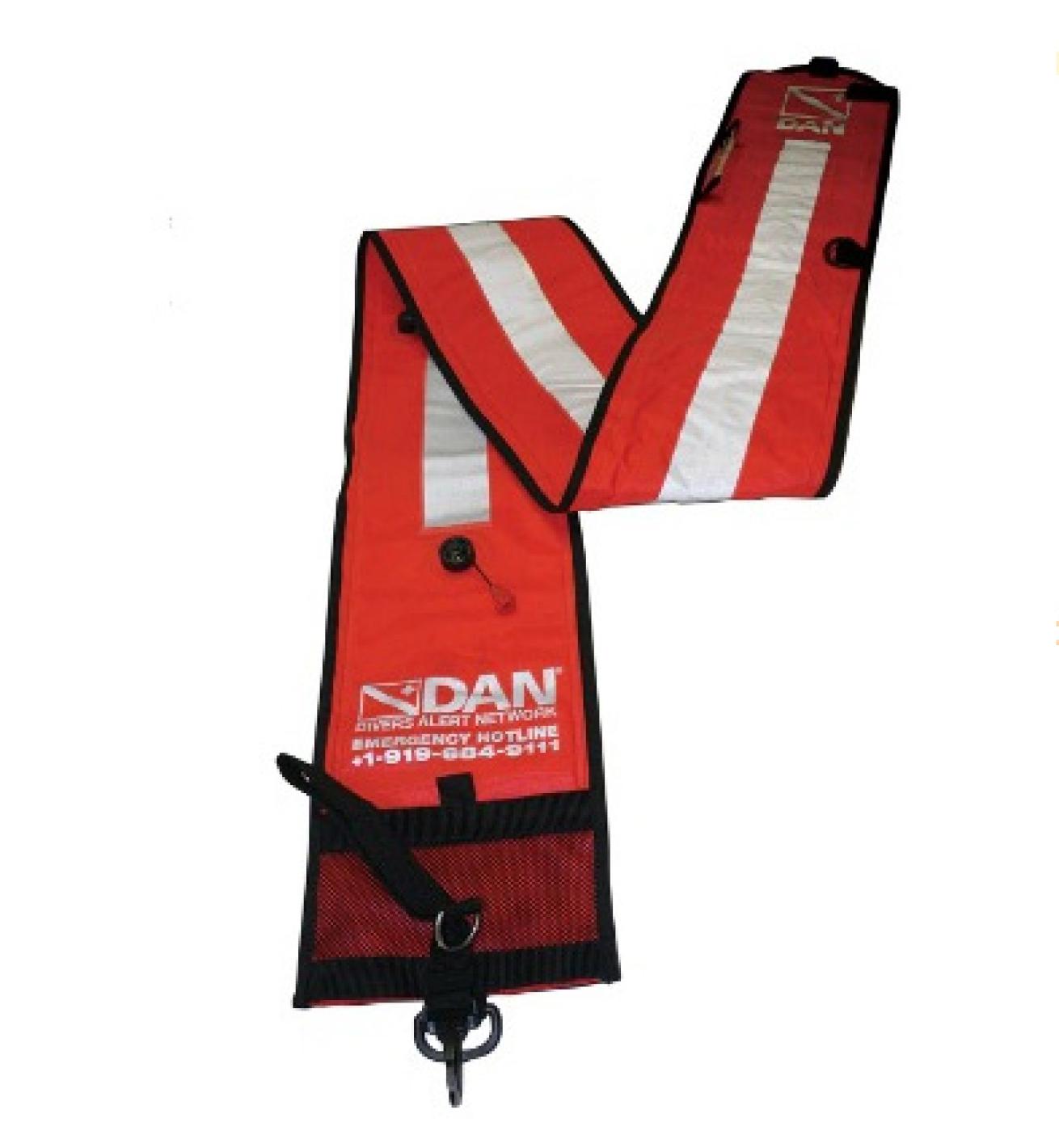
This kit offers multiple attention-getting options, including a 6-foot safety tube that stands almost five feet above the waterline, a Wind Storm whistle audible to about a half-mile, a signal mirror and a chemical light stick. The tube can be clipped to a lower D-ring leaving hands free to flash the mirror and blast the whistle. It's also easy to use - the tube can be filled from a regulator, orally, or from your inflator hose. A built-in mesh pocket corrals all the accessories, and a full-length, two-inch-wide reflective strip provides better vis at night. We don't leave the dock without it. diversalertnetwork.org
Few things will plunge your heart into your gut faster than surfacing from a dive to find the boat is not there. Floating alone, you feel like a flyspeck on a vast ocean, and relative to the surface area you’re bobbing around in, that’s pretty much what you are. If you want to get noticed, you’re going to need some help.
Surface signalling devices (SSDs) can be categorised into four types: visual, audible, electronic, and night-use. Depending on surface conditions, each type brings to a rescue scenario its own advantages.
Visual
The most commonly used visual SSD is the signal tube, also known as the safety sausage. An average-size signal tube is effective in attracting attention up to about a half mile, while larger/longer tubes can commonly be seen from three-quarters of a mile and sometimes up to a full mile, depending on the size of the tube, the time of day, and the surface conditions.
Buy the longest, widest, brightest tube you can carry. Color can also make a difference: fluorescent-yellow tubes tend to be more visible in overcast conditions, while emergency-orange tubes stand out better in bright sunlight. Different colors are easier to spot depending on the conditions; if you have both a yellow and an orange tube, deploy both for maximum visibility.
Deploy your signal tube immediately upon surfacing if you’re drifting away from the boat. You may be out of visible range in a matter of minutes.
Wave the tube over your head until you see some sign that the boat has noticed you. Multiple tubes are easier to spot than individual ones. If your buddy has a tube, both should be deployed.
The signal mirror is an under-appreciated method for attracting attention. Light and compact, most signal mirrors are made from durable polycarbonate materials that won’t break. The best mirrors offer a center “sight” that lets you see the reflection as a red spot when you look through it. Put the red dot on the vessel you’re trying to signal and they should see the flash. Mirror reflections can easily be seen from as much as a half-mile away.
Audible
In low-light conditions or when visibility suffers due to fog, mist, or choppy seas, the blast of an emergency whistle can get searching ears pointed in your direction in a hurry. Standard signal whistles are effective up to about a quarter-mile. The best whistles can be heard over twice that distance. But to radically increase the chance of being heard you need to equip yourself with a pneumatic horn. These compact devices install between the BC’s power inflator and low-pressure hose. Using air from your tank, the push of a button creates a piercing honk that can be heard up to a mile away.
Electronic
For local diving, the most versatile devices combine a fully waterproof GPS with a handheld VHF radio, allowing you to contact the dive boat — or any boat within range — send a distress call directly to the Coast Guard, or transmit a digital distress message with your GPS coordinates. There are also GPS devices that don’t offer VHF but do have the ability to text message, email, and send emergency SOS messages. For diving foreign waters, the best electronic rescue aids are the more traditional systems like GPS personal locator beacons. However, these units are not built for depth so they have to be carried in a waterproof dry box while diving and used only on the surface.
**Night Use: **
If the worst-case scenario comes to pass and you find yourself out on the ocean after dark, nothing beams “Here I am!” more intensely than a strobe light — preferably one that’s mounted atop a signal tube to get maximum elevation. Chemical light sticks or battery-powered tank lights enlarge your target by providing steady light that contrasts the strobe. And having a pocket light handy that you can wave wildly when the time comes helps approaching boats zero in on your position.
Mix It Up
To maximize the chances of rescue it never hurts to dive with at least two signalling devices — for example, a tube and an air horn or whistle. Mirrors are small and stow easily, so you may as well carry one of those too, and, of course, a pocket light is good to have for exploring the reef while you’re diving, so having a dive light could also come in handy if you’re separated from the boat at the surface following a night dive. In other words, it’s better to have it and not need it, than to need it and not have it.
Read a review of the Nautilus Lifeline
Read a review of Ideations Dive Alert
John Brumm is Sport Diver Asia Pacific’s Gear Editor.

